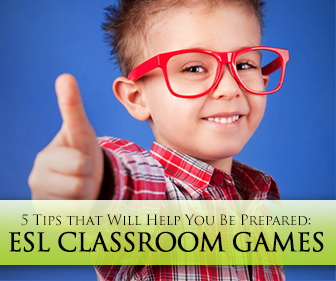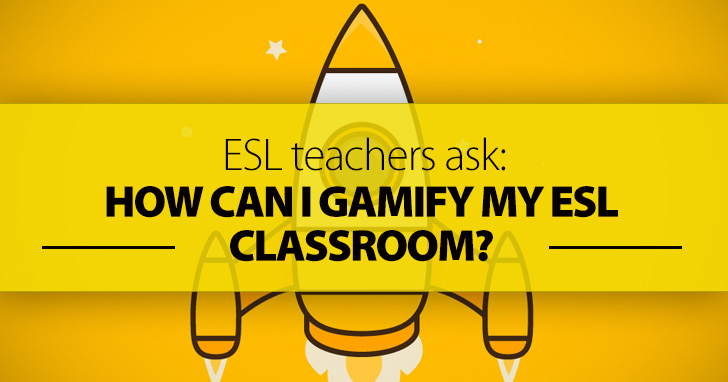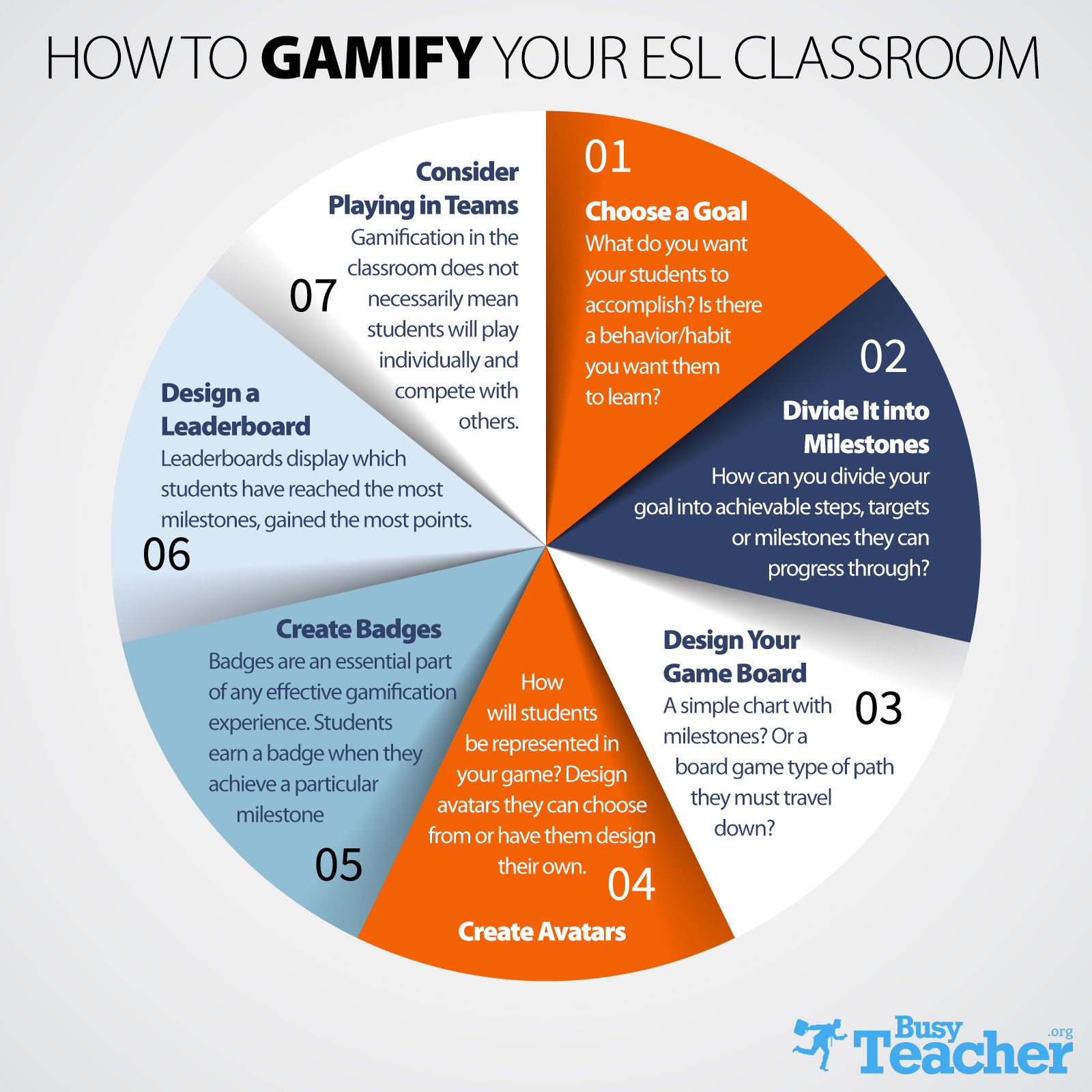Games in the ESL Classroom: 5 Tips that Will Help You Be Prepared


Bingo… Tic-Tac-Toe… Hangman… We’ve been playing games in the ESL classroom for ages. But as stated in the question above, “gamification” is more than simply “playing games”. So, what is gamification? Why should you use it in your ESL classroom? How can you use it? Let’s address each of these questions.

Gamification is the use of game elements and game design techniques in non-game contexts. Typical game elements include the use of leaderboards, avatars, points, levels, rewards and badges, just to name a few. If you were to gamify your ESL classroom, you’d first have to define a goal you hope your students will accomplish, then use game techniques to design a game that will help your class achieve this goal, while including the use of the previously mentioned game elements. Simply put, if you’re playing games in your classroom, you’re not really gamifying. Gamification involves the design of a personalized game, a game you’re creating to engage your students by appealing to their natural interest in gaming.

So gamification involves a whole lot more than choosing a game to play and playing it; you have to actually design one and that will take a whole lot of effort and work on your part. Why bother? We have to face the facts. An overwhelming number of kids and adults play video, mobile or even Facebook games. They are addicted! What’s so appealing about games these days is not just the game itself, but also the social interaction and the competition. Players post their high scores and get to beat their friends. Leaderboards show who’s first. Badges display all of your accomplishments. More importantly, a game does not simply start and finish. There’s a progression as players move from one level to the next, the ultimate goal being to reach the highest tier. It’s motivating. It’s engaging. There’s no denying that. And just because it’s a “game”, it does not mean it can’t be an educational experience.


What do you want your students to accomplish? Is there a behavior/habit you want them to learn? Pick any goal, but not a learning goal, like “learn the Simple Past”. Think of a longer, overarching goals for the year, like completing homework tasks, following classroom rules, or writing better and longer texts.
Say your goal is to get students excited about doing homework (something that for most is not exciting at all). Think of how you can divide this into achievable steps, targets or milestones they can progress through. For example, the first step can be “5 Tasks Completed On Time”; the next step can be “10 Tasks Completed On Time” and so on. You can make this as simple or as complex as you like (you may want to specify different types of homework tasks – writing, reading, grammar – , for example).
Will it be a simple chart with milestones? Or a board game type of path they must travel down? Again, you may stick to a simple design or get as creative as you want!
How will students be represented in your game? Design avatars they can choose from or have them design their own.
Badges are an essential part of any effective gamification experience. Students may earn a badge when they achieve a particular milestone (“5 Tasks Completed!”) but the gaming experience is enhanced when you allow your students to unlock “secret”, unexpected badges. For example, if a student hands in a homework assignment with no spelling mistakes, you may announce the big surprise: he/she has unlocked the “Spelling Bee” badge! How about some goofy badges? How about a “Mighty Pen” badge for a student who’s written over a thousand words? Create your own or use a site like ClassBadges, where you may award badges and students can keep track of the ones they’ve earned.
Students will want to know where they stand. Leaderboards may not only display which students have reached the most milestones or gained the most points, but also show achievements and badges earned.
Gamification in the classroom does not necessarily mean students will play individually and compete with others. You may want to divide the class into teams and have the groups compete. Think Harry Potter and Hogwarts. Students are divided into four “houses”. Each house earns points for accomplishing different tasks. So in your classroom, let each team come up with their own name and symbol/badge/image to represent them. Each team may be awarded points for winning a game, tidying up the classroom, helping the teacher, etc... Students who misbehave or don’t respect classroom rules may get points deducted from their team score. At the end of the year, the team with the highest score gets a special prize.
Gamifying a class may seem like a daunting task. But it doesn’t have to be. I recommend you start small by gamifying a single goal or experience. As you gain experience in gamification, you can build to bigger and better experiences, and gamify not just behaviors but also learning outcomes. Game on!
If so, please share your experience below!
* This question was sent in from a real ESL teacher, just like you! If you need any advice on a particular topic, share your question in the comments below. Or tweet your question to @busyteacher_org with the hashtag #ESLTeachersAsk. Your question might get picked and featured in an article!